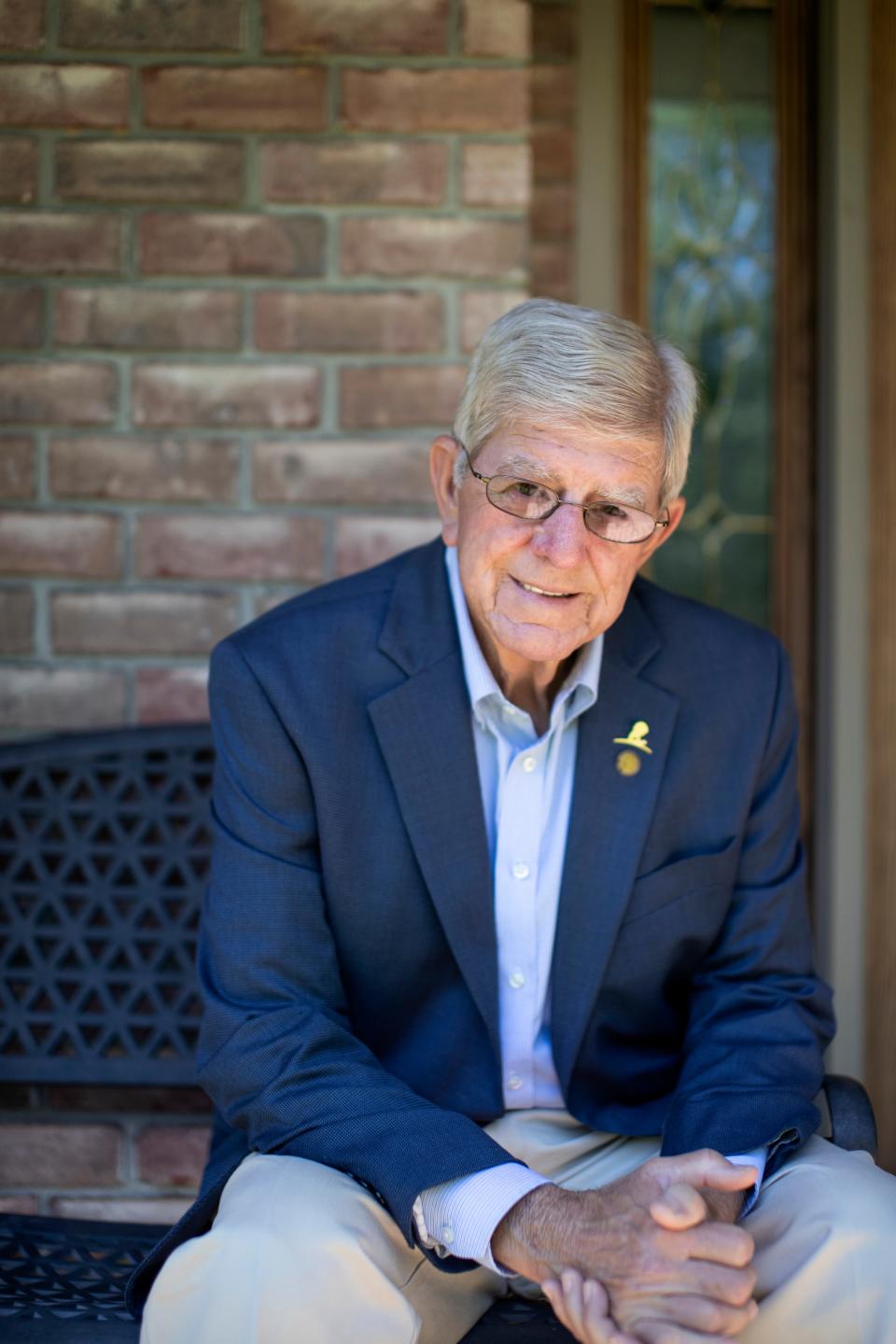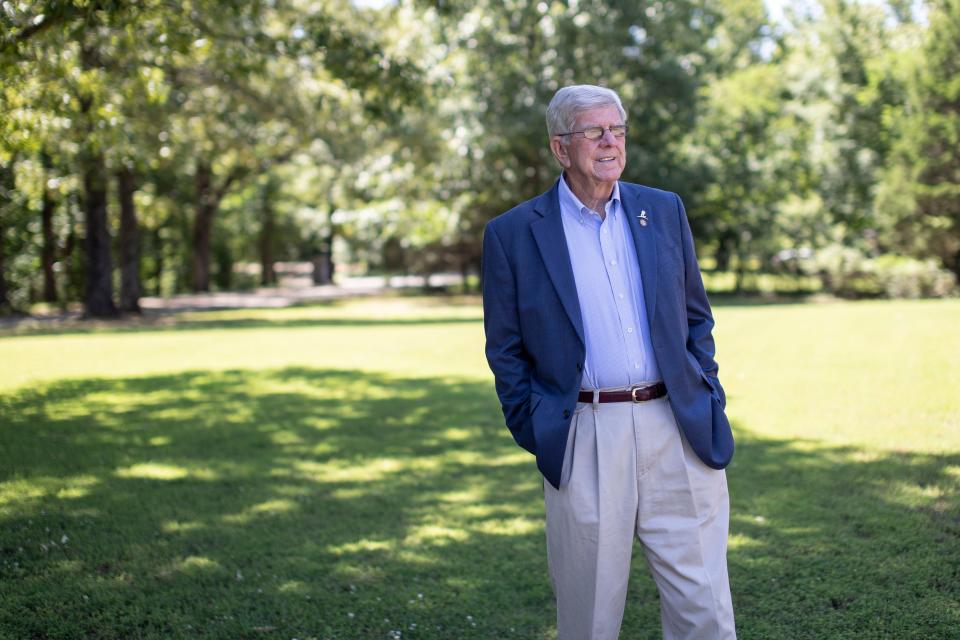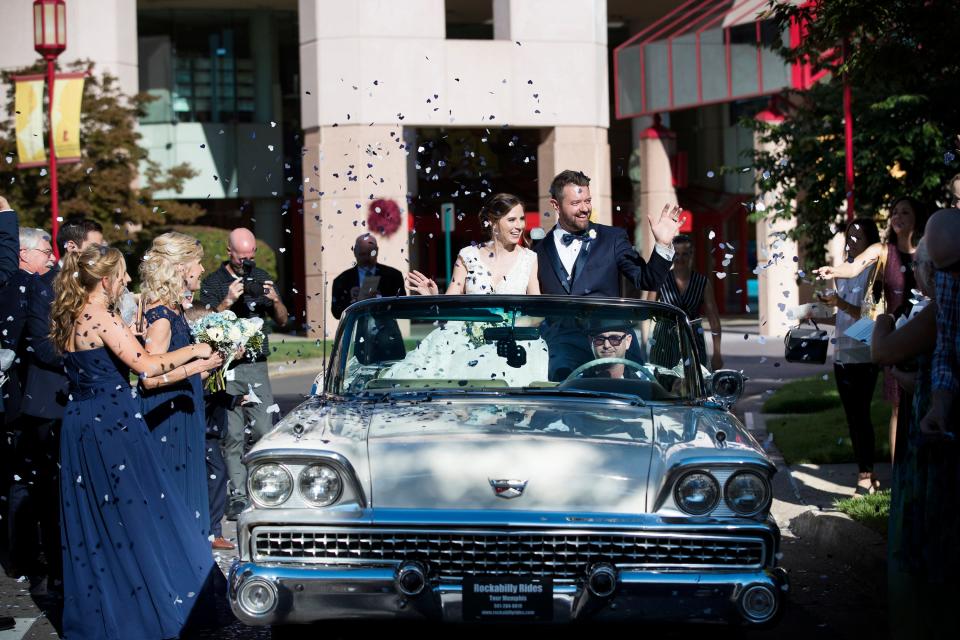My hero, No. 17: How the stories of St. Jude taught a jaded journalist to see the light | Opinion
I want to tell you a story about my favorite basketball player.
It’s not about a dramatic shot to beat the buzzer and win the game. It’s not about a legendary career filled with titles and trophies.
It’s about a career that wasn’t. It’s about a 13-year-old Arkansas boy in 1962 who loved basketball more than anything, but never got the chance to see how far the game might take him.
Because this is a story about childhood cancer, about a diagnosis of Hodgkin lymphoma that came too late for the boy’s hometown doctors to help him. This is about a family being told to prepare for the end. But it’s also, blessedly, about second chances — a real-life buzzer beater, as it were — when the boy said to have weeks to live was saved by a new children’s research hospital that opened just months earlier, down the road and across the river, in Memphis.
Magic, Bird, Air Jordan, King James. They all kind of shrink in comparison, huh?
So, my favorite basketball player?
That’s easy. It’s No. 17.
That’s not the number Dwight Tosh wore on the court, mind you. It’s his patient number at St. Jude Children’s Research Hospital. He was the 17th child to walk through — or to be carried through on a stretcher, in his case — the doors that founder Danny Thomas opened to the world on Feb. 4 of that year.
Hear more Tennessee Voices: Get the weekly opinion newsletter for insightful and thought provoking columns.

As I retire from nearly forty years of storytelling, most of them at newspapers, I find myself reflecting mostly on these last four years at ALSAC, the fundraising and awareness organization for St. Jude. I wouldn’t have thought this possible, when I arrived here in late 2017, after 35 years as a reporter and editor.
Because I used to think daily journalism was the most meaningful use of whatever talents God and good genes gave me. I thought newspaper reporter was about the most noble thing I could be, and I didn’t expect a late-career stint at St. Jude to change that.
After all, newspaper reporters are taught to be emotionally detached, so as to objectively report the news, much of which, let’s face it, involves suffering of one sort or another. It tends to create emotional callouses, which newspaper types come to see as battle scars, badges of honor.

Jaded journalist? That’s redundant, right? I thought so.
And then I got the chance to tell the profoundly moving stories of St. Jude patients like Dwight.
As a newspaper reporter, I covered everything from the Kentucky Derby to the aftermath of Hurricane Katrina. I was sent to Olympic Games in Lillehammer, Atlanta and Sydney.
But my favorite assignment of all might be the day I spent with Dwight, riding in his truck as he drove from his home in Jonesboro, Arkansas, to the state capitol in Little Rock, where he’s a state representative.
As he drove, he told me about this life. About childhood and St. Jude and his last-second second chance. About Joan, his high school sweetheart and wife of five decades. About his 37-year career in the Arkansas State Police, and the political career that followed. About a belief that his was to be a life of service. And about his personal mission to prove what’s possible for a cancer survivor, to show “you’re not just some poor, sickly child who’s lost the ability to do anything.”
Maybe it’s the old sportswriter in me, but I was especially moved when Dwight talked about basketball. It was his first love, and he lost it: Even after successful treatment, he couldn’t play, because after treatment he had trouble walking, much less running.
More than half a century later, it still nagged at him.
“I never could go back to basketball,” he said that day. “I just couldn’t run. I wanted to, so bad. And I still think about it today. What if? You know. Just what if? Lot of coaches thought I had the potential. Then it was all boom — gone.”
He told a story about one day at basketball practice. The coach called for a scrimmage — shirts and skins. But before the players could be split into two teams, those with jerseys and those without, Dwight approached his coach.
“I said, ‘Coach, I don’t need to be skins.’ I said, ‘I got something going on.’ I didn’t want to take my shirt off,” he said. “And then right after that I started running a fever. All that’s how it started.”
We marvel at our basketball heroes, their fanciful flights and grace under pressure, how they elevate mere games to something like the height of human drama. But imagine loving basketball more than anything, then realizing you can’t play anymore, and then finding a new way to live a life of meaning, joy, purpose and passion. That was the story of Dwight’s state police career: “I worked hard. I volunteered for stuff. I became a SWAT team leader. I became a hostage negotiator — I was trained by the FBI hostage negotiation team. … I mean, whatever it was, I wanted to be in the middle of it.” That’s the story of Dwight’s life.
It’s the story of so many of the St. Jude patients I’ve had the privilege to write about these past few years. Patients like Tiara Herr, who is legally deaf after treatment for neuroblastoma, yet plays the piano, writes and sings original songs, performs in musical theater, and gives voice lessons.
Or those patients who make the cause their careers, returning to work at St. Jude, like physician assistant Hayley Arceneaux, or at ALSAC, like Joel and Lindsey Alsup, who met as patients during fundraising events and later fell in love and were married — on campus, in what another colleague and fellow former patient dubbed “the Royal Wedding of St. Jude.”

These are some of the bravest, boldest, strongest, most hopeful, gracious and giving people I’ve ever met.
To write their stories has been the honor of my career.
Here’s to every one of them, with a special nod to No. 17.
David Williams is lead writer for St. Jude Inspire, part of ALSAC, the fundraising and awareness organization for St. Jude Children's Research Hospital. He is also a book author and former sports editor for The Commercial Appeal.
This article originally appeared on Memphis Commercial Appeal: How the stories of St. Jude taught a jaded journalist to see the light

